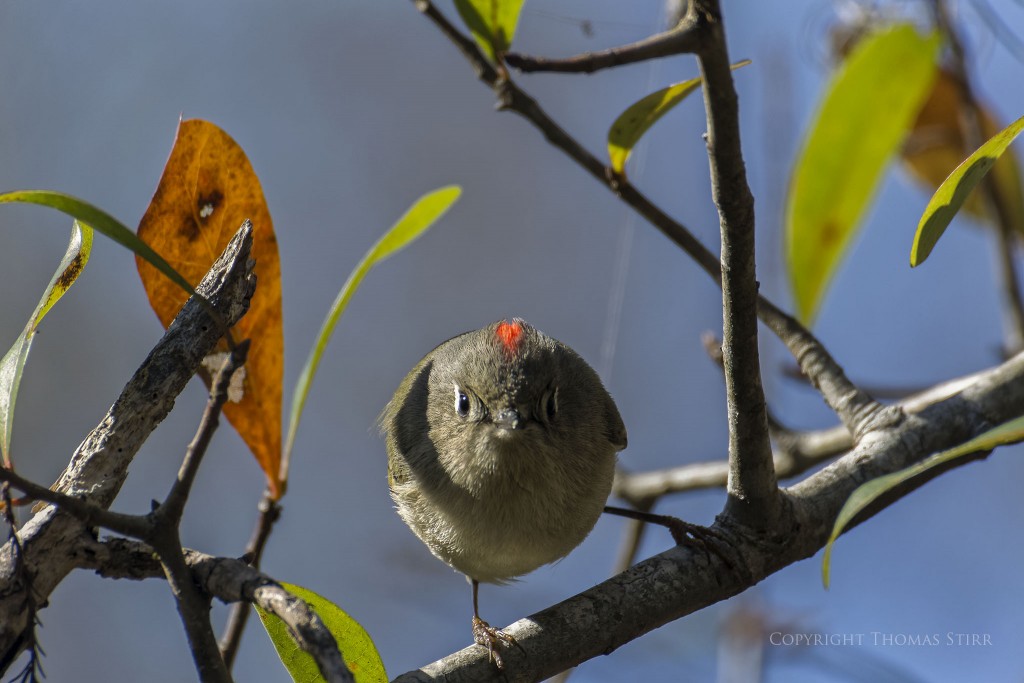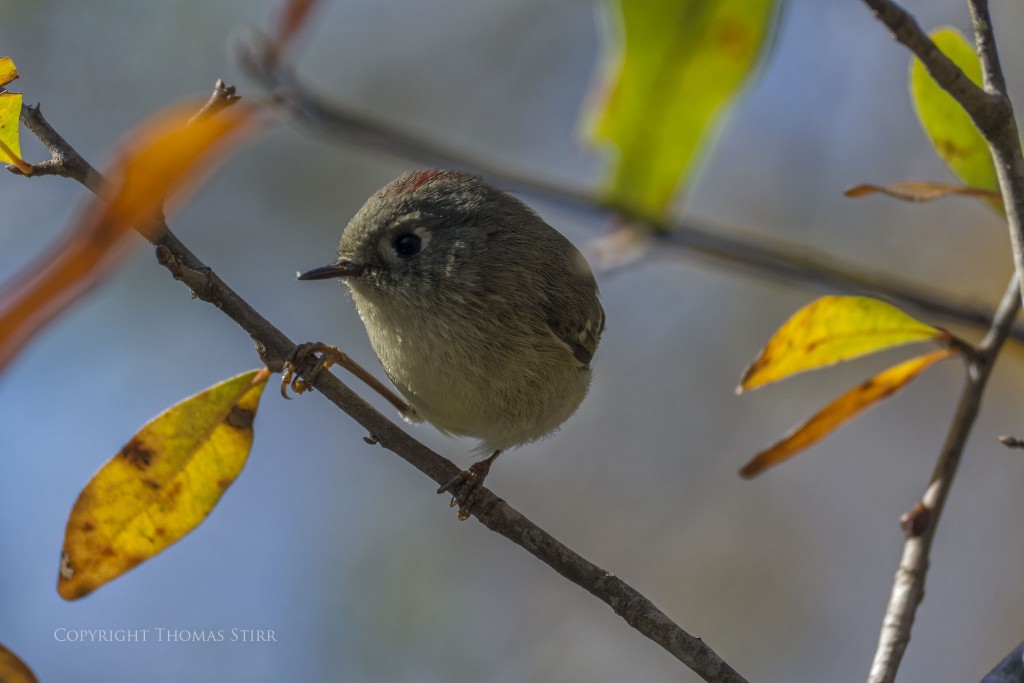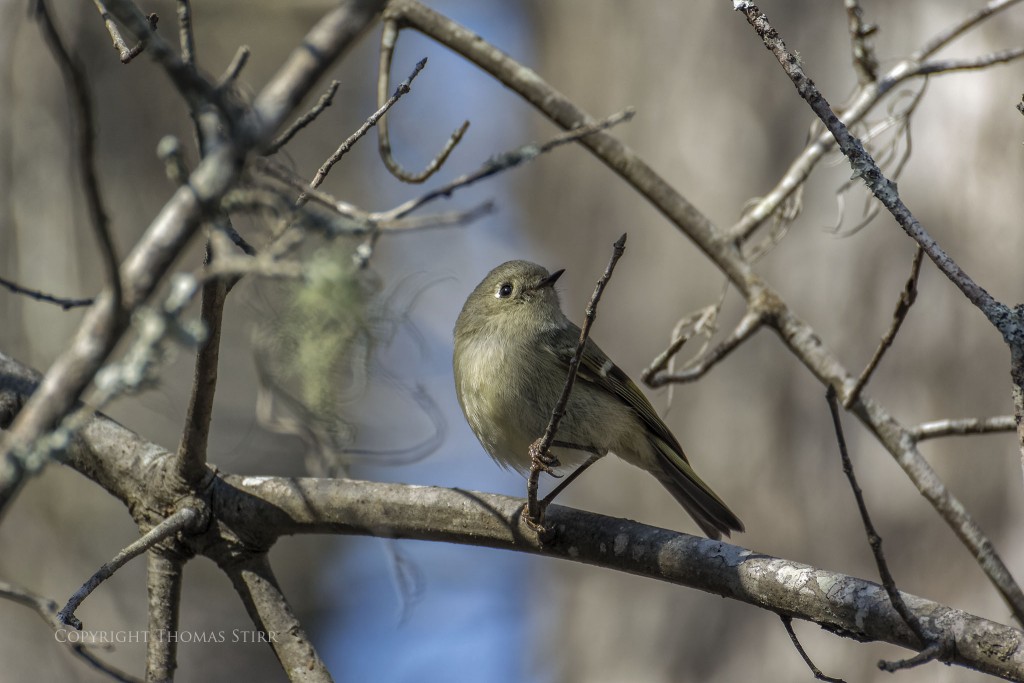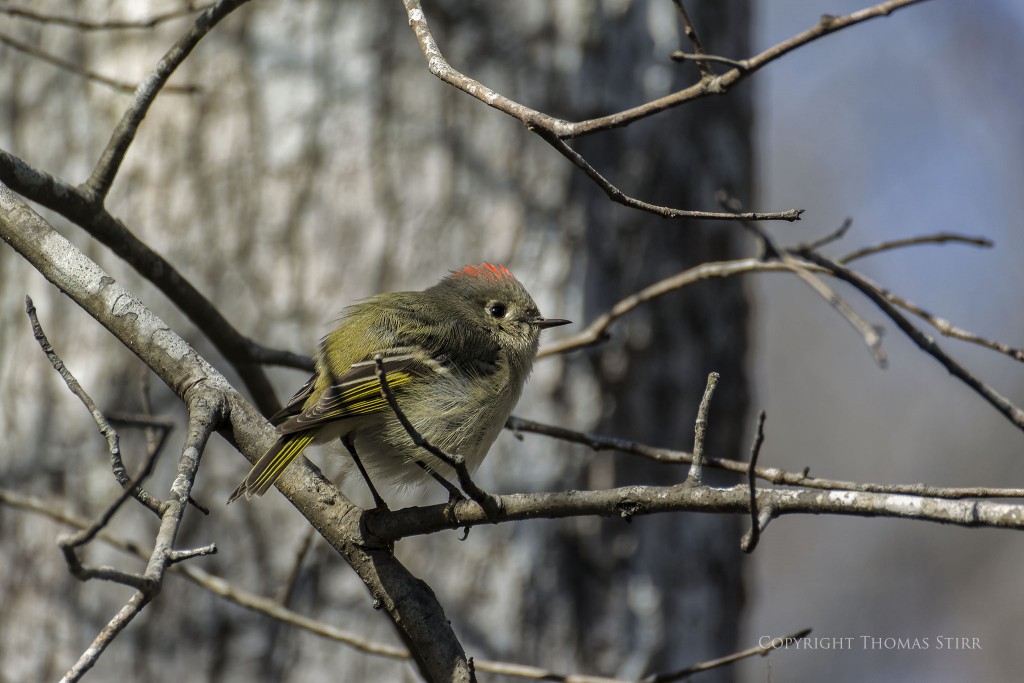One afternoon while in South Carolina my wife and I took the opportunity to visit the Audubon Center at Beidler Forest. While there were very few birds near the board-walk that afternoon I did have the opportunity to capture a few images of a Ruby-Crowned Kinglet.
NOTE: Click on images to enlarge.

These tiny birds are quite common with a migratory range extending from Alaska to Mexico. Both males and females have olive-green plumage with two white bars on their wings, and a white eye ring. Males have a red patch on their crown which is often concealed.

The Ruby-Crowned Kinglet is one of the smallest songbirds in North America measuring only 3.5 to 4.3 inches long (9 to 11 cm). It has a wingspan of 6.3 to 7.1 inches (16 to 18 cm) and weighs a tiny 0.2 to 0.4 ounces (5 to 10 g). It feeds mainly on insects but will also eat fruits and seeds.

It is so small and flies in such a swift and erratic manner that it is incredibly difficult (impossible for my skill level) to capture in flight. Even trying to photograph this tiny bird while perched is a challenge as it is extremely active, constantly hopping and darting from branch to branch.
If you live in North America you’ll probably have the opportunity to see some Red-Crowned Kinglets. Their numbers are on the rise as some of their breeding territory in the far north is quite remote and undisturbed. The birds lay up to 12 eggs in each clutch making them quite successful breeders.

The images that I was able to capture were taken at the top of the observation tower at Goodson Lake in Four Holes Swamp. My wife noticed a single, male specimen flitting about in a tree right next to the observation tower.
I had about two minutes to try to capture some images as this little guy darted and hopped about. I waited patiently for him to momentarily perch on branches that afforded me a clear capture.
I used ‘both eyes open’ technique to try to keep some awareness of where the bird had flitted to next.

The reach and comparatively short minimum focusing distance of my CX 70-300 as well as the fast and accurate auto-focus performance of my Nikon 1 V2 were very useful to help capture these images. I shot in aperture priority mode, using single point auto-focus. All of the photographs in this article are full frame captures without any cropping.
My intent is to keep this photography blog advertising free. If you enjoyed this article and/or my website and would like to make a modest $10 donation through PayPal to support my work it would be most appreciated. You can use the Donate button below. Larger donations can be made to tom@tomstirr.com through PayPal.
Article and all images Copyright Thomas Stirr. All rights reserved. No use, duplication of any kind, or adaptation is allowed without written consent.


It’s so cute! What an adorable little bird. I’m a fan of anything that eats bugs, but this little guy with his hidden red crest, is very cute. Nice catches Tom. I’m working on getting little fidgety birds with my D7100 + Tamron 150-600 (hey look, something else I gave a shot because you recommended it!) but that’s a lot of inertia to move quickly. I need more practice (and more muscles).
Hi Sean,
I’m sure with some practice you’ll be able to capture small birds with the set up. With the additional weight you may find starting with the Tamron only partially extended will help locate the target bird. I used the lens hood like a bellows to zoom in and out with the Tamron as I found it was much quicker to operate that way. You may want to give that a try. The comparatively short minimum focusing distance of my CX 70-300 really came in handy as I could focus close enough I didn’t have to crop the images. At almost twice the minimum focusing distance you’ll likely have to crop with your D7100 but you’ll have a lot more MP with which to work.
Tom
Hi Thom
Very nice pics for such a small bird. May I ask you if a ”better beamer” (fresnel lens + flash)or a flash setted at -1ev would be a good choice for such birds ?
regards
Luc
Hi Luc,
I didn’t have trouble with the lighting since it was winter when we visited and there was no tree canopy cover of which to speak. During the late spring or summer I would imagine that lighting would be much darker and a flash could help. The biggest challenge with these small birds was simply finding them in my EVF quickly enough to even try to capture an image.
Tom
You did well, these are very similar to our European Goldcrest, another little fidgety bird which is soooooo hard to track.
Thanks Ian! You’re right this little guy was really hard to track.
Tom